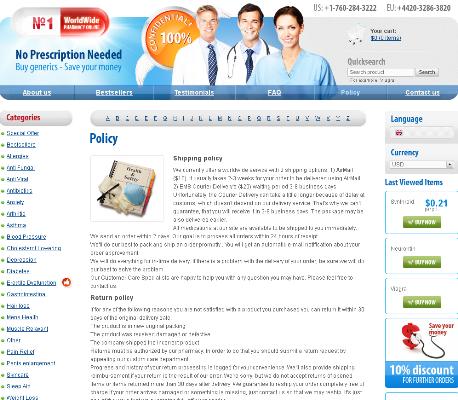When to Seek Help after Ventolin Use
When Ventolin Provides Little or No Relief
I remember a late night when inhaler puffs barely touched the tightness; fear nudged me to check timers and doses. If quick-relief medicine seems ineffective, don’t ignore it. Symptoms that persist after your prescribed number of puffs can signal worsening airflow obstruction or an inadequate dose, so act promptly and calmly.
Watch for a sudden increase in symptoms, persisting breathlessness, or reduced peak flow readings — these are clear cues to call for help. If signs like trouble speaking, bluish lips, confusion, or a Noticable drop in response appear, seek emergency care. Teh right response can prevent deterioration; carry your action plan, note inhaler frequency, and tell clinicians exactly what you tried before arriving exact timing.
| Sign | Suggested Action |
|---|---|
| Persistent symptoms | Contact provider |
| Severe distress | Go to emergency |
Frequent Inhaler Use: Alarming Spike in Daily Doses

Last week I found myself reaching for my inhaler several times an hour, each puff a promise that didn’t always keep. That rising tally feels frightening: three, four, then half a dozen doses, leaving you wondering if control is slipping. Keep track of doses and triggers, and note any patterns. If your rescue inhaler becomes the first response more than twice a day, call your clinician — Teh signal deserves prompt attention.
Clinicians may ask for regular peak flow readings, frequency logs, and exposures. ventolin overuse can mask worsening inflammation and require stepped therapy; it’s not symptom relief. Look for noticable changes, waking at night, need for extra puffs before exercise, or shorter relief duration. These clues help guide safer management and prevent emergency visits. If doses climb despite adherence, seek advice without delay so a tailored plan is made.
Worsening Symptoms: Rapid Breathlessness or Chest Tightening
I remember nights when breathing narrowed to a whisper and each inhale felt like a climb; that sudden panic is a clear warning sign. If ventolin only briefly eases symptoms while breath quickens or chest tightens, act promptly. Rapid deterioration can follow, so don’t wait to see if it improves. Definately call for help if rescue doses stop working, if your lips turn pale, or if talking becomes very hard.
When you seek care, say how many puffs of ventolin you used, when symptoms started, and any other signs like dizziness or faintness. Continue prescribed inhaler dosing while waiting and avoid exertion. If you have an asthma action plan or a peak flow meter, take readings and share them. Clear, specific details help clinicians triage quickly and start treatments that can stop an attack escalating; early response often reduces complications.
Serious Side Effects: Tremor, Palpitations, Severe Headaches

You might notice alarming sensations after using your inhaler: a shaky feeling, a fast or irregular heartbeat, or a pounding headache that won’t ease. Such reactions are distressing; note timing, dose and other medicines to share with your clinician, noting each occurence and whether symptoms improved or worsened.
If these symptoms start suddenly, worsen, or are intense enough to limit activity, seek prompt advice. ventolin is lifesaving for many, but adverse responses can require dose adjustment, an alternative bronchodilator, or further cardiac and neurological evaluation. In some cases, monitoring or a brief ER visit is the safest path to rule out dangerous complications.
Don’t dismiss recurring episodes—especially if they occur after multiple uses in a day. Your clinician recommend treatment changes or tests to determine underlying conditions that increase risk; early intervention can prevent escalation and give quicker reassurance today.
Nighttime Flare-ups or Falling Peak Flow Readings
Sleep can reveal hidden asthma instability: waking with coughing, wheeze, or gasping suggests control is slipping. If you rely on relievers at night or feel less recovered after using ventolin, record each episode and its timing. Keep diary for a week to show your clinician patterns. Early recognition helps prevent severe attacks.
| Sign | Action |
|---|---|
| More than two nocturnal reliever uses/week | Contact clinician |
| Peak flow down >20% | Follow action plan |
Repeated nighttime symptoms often mean your baseline therapy needs review, not just more rescue inhaler. Call your healthcare team if peak flow readings trend downward or if you feel more breathless at rest. Do not wait untill morning; seek help right away.
Timely advice can be neccessary to adjust preventers, update your written plan, and avoid emergency visits, especially during winter. This helps you maintain stability and avoid sudden deterioration often.
Unclear Technique or Poor Response: Call Your Doctor
After fidgeting with the inhaler, you worry about whether it reached your lungs. Small coughs and faint wheeze can leave you uncertain; Teh breath eases, but not enough. An anxious pause matters—poor technique or a faulty device can mimic treatment failure, so watch for little puffs, inhale errors, or no visible mist.
If relief is minimal or doses pile up, call your clinician. They can observe technique, recommend a spacer, check medications or alter therapy. Early review prevents escalation and reassures you, so don’t delay to recieve prompt tailored advice. https://www.nhs.uk/medicines/salbutamol/ https://www.lung.org/lung-health-diseases/lung-disease-lookup/asthma/treatment/bronchodilators
<

